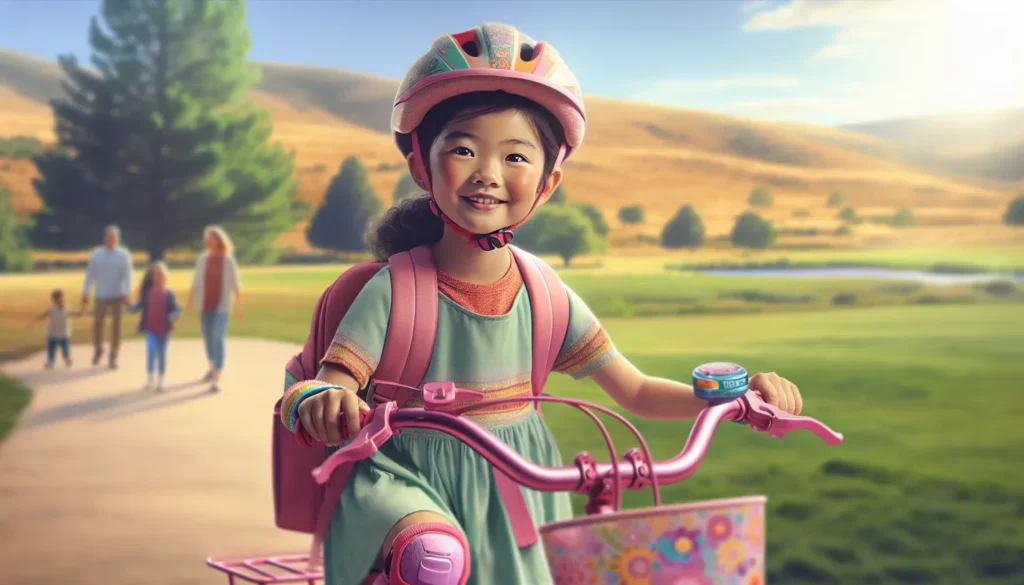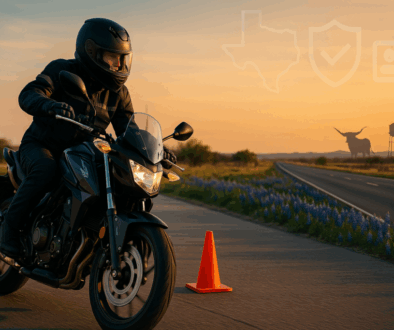How to Teach a Kid to Ride a Bike: Step-by-Step Guide for Parents
Key Takeaways
- Teaching a kid to ride a bike builds confidence, independence, and physical coordination, making it a memorable milestone.
- Choosing a properly sized bike, safety gear like helmets, and an ideal practice area ensures a safe and effective learning experience.
- Focus on balance and steering first, followed by pedaling and braking to help kids learn gradually and confidently.
- Address common challenges, such as fear of falling, with patience, encouragement, and proper safety precautions.
- Celebrate small victories and set realistic expectations to make the learning process enjoyable and stress-free.
- A positive and supportive approach helps create a fun, lasting memory for both parents and kids.
Teaching a kid to ride a bike is one of those unforgettable milestones. I still remember the mix of excitement and nerves when I first helped my little one take off on two wheels. It’s not just about learning to balance—it’s about building confidence, independence, and a sense of adventure.
Benefits Of Learning To Ride A Bike
Riding a bike builds physical strength and coordination. It engages muscles in the legs, core, and arms, improving balance and overall motor skills.
Cycling helps develop confidence. Successfully learning to ride encourages kids to trust their abilities and face new challenges.
It fosters independence. A bike becomes a tool for exploration, giving kids the freedom to navigate short distances on their own.
Biking promotes social connections. Group rides or neighborhood cycling give children opportunities to bond and interact with peers.
It supports sustainable habits. Riding a bike introduces an eco-friendly form of transportation early in life.
Cycling enhances mental well-being. Exercise through biking helps reduce stress and boosts mood by releasing endorphins.
Preparing For The First Lesson
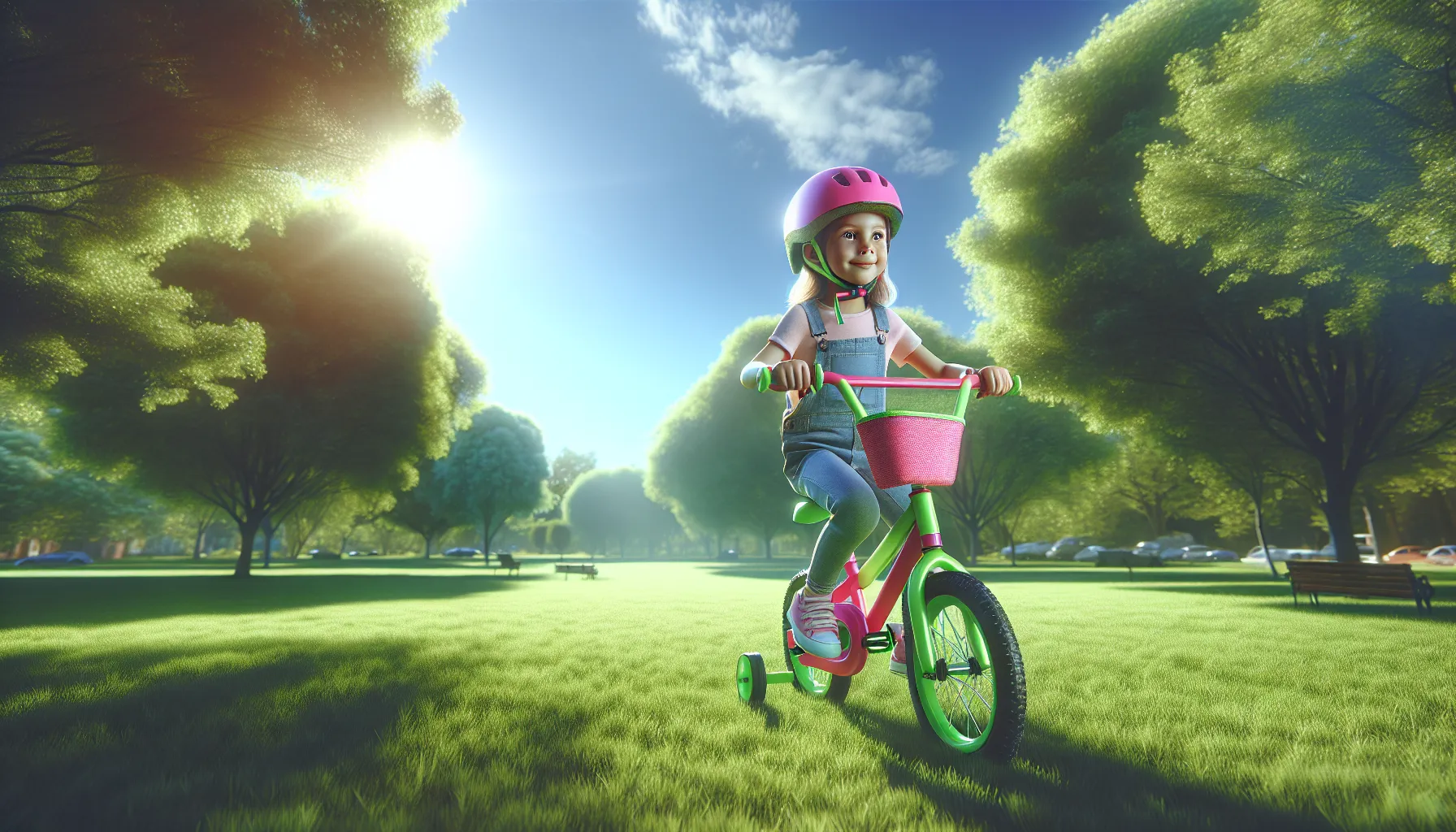
Setting up for a child’s first bike lesson is an exciting step. Proper preparation lays the foundation for a safe and enjoyable learning experience.
Choosing The Right Bike And Safety Gear
A correctly sized bike makes learning easier. The child’s feet should comfortably touch the ground while seated on the saddle. Balance bikes or bikes with training wheels help beginners feel more stable. Inspect regularly for secure bolts, brakes, and properly inflated tires.
Safety gear ensures protection during falls. A well-fitted helmet is vital—choosing models certified by safety standards like CPSC ensures quality. Elbow pads, knee pads, and gloves add additional protection. Bright-colored clothing increases visibility when riding outdoors.
Finding The Perfect Practice Area
Selecting an ideal practice spot creates a stress-free environment. Flat, open spaces like empty parking lots, parks, or smooth sidewalks work best. Avoid areas with heavy traffic, crowded pathways, or steep inclines.
Ensure there are no hazards like debris, sharp objects, or uneven surfaces. A clear, distraction-free space helps focus on balancing and steering.
Step-By-Step Guide On How To Teach A Kid To Ride A Bike
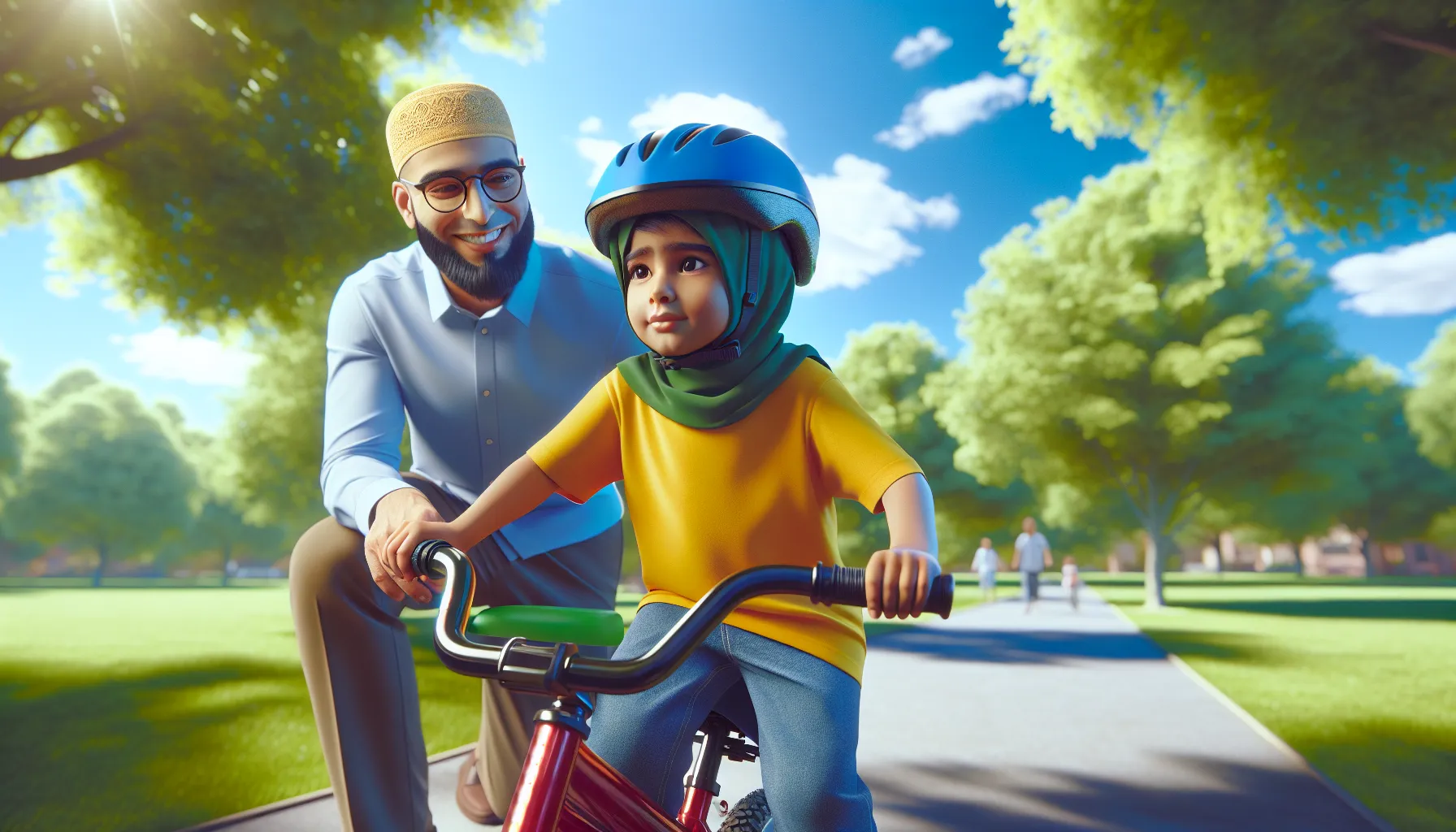
Teaching a kid to ride a bike can be broken down into simple steps. Starting with balance and progressing gradually helps build confidence along the way.
Starting With Balance And Steering
I begin with balance because it forms the foundation of riding. Balance bikes work best for this, but if using a pedal bike, I remove the pedals to convert it temporarily. I encourage the child to push off the ground with their feet and glide. This helps them gain a sense of stability.
For steering, I show how slight handlebar movements can change direction. I guide them to follow a straight line or use chalk to create a simple path to practice steering while keeping their balance.
Introducing Pedaling Techniques
Once stable steering and balance are achieved, I attach the pedals back. I demonstrate the pedaling motion and hold the bike steady as they try. Starting on a slight downward slope makes it easier for kids to begin pedaling without much effort.
I ensure they focus on maintaining forward momentum while pedaling consistently. I stay beside them, offering verbal encouragement to keep their confidence high.
Practicing Braking And Stopping
Properly braking is as important as riding. I explain how to gently squeeze the brake handles to slow down and eventually stop. To practice, I draw a stopping line on the ground and ask the child to brake before crossing it.
I also teach them to plant their feet on the ground after stopping for stability. Repeating this step ensures they feel comfortable controlling the bike in different situations.
Overcoming Common Challenges
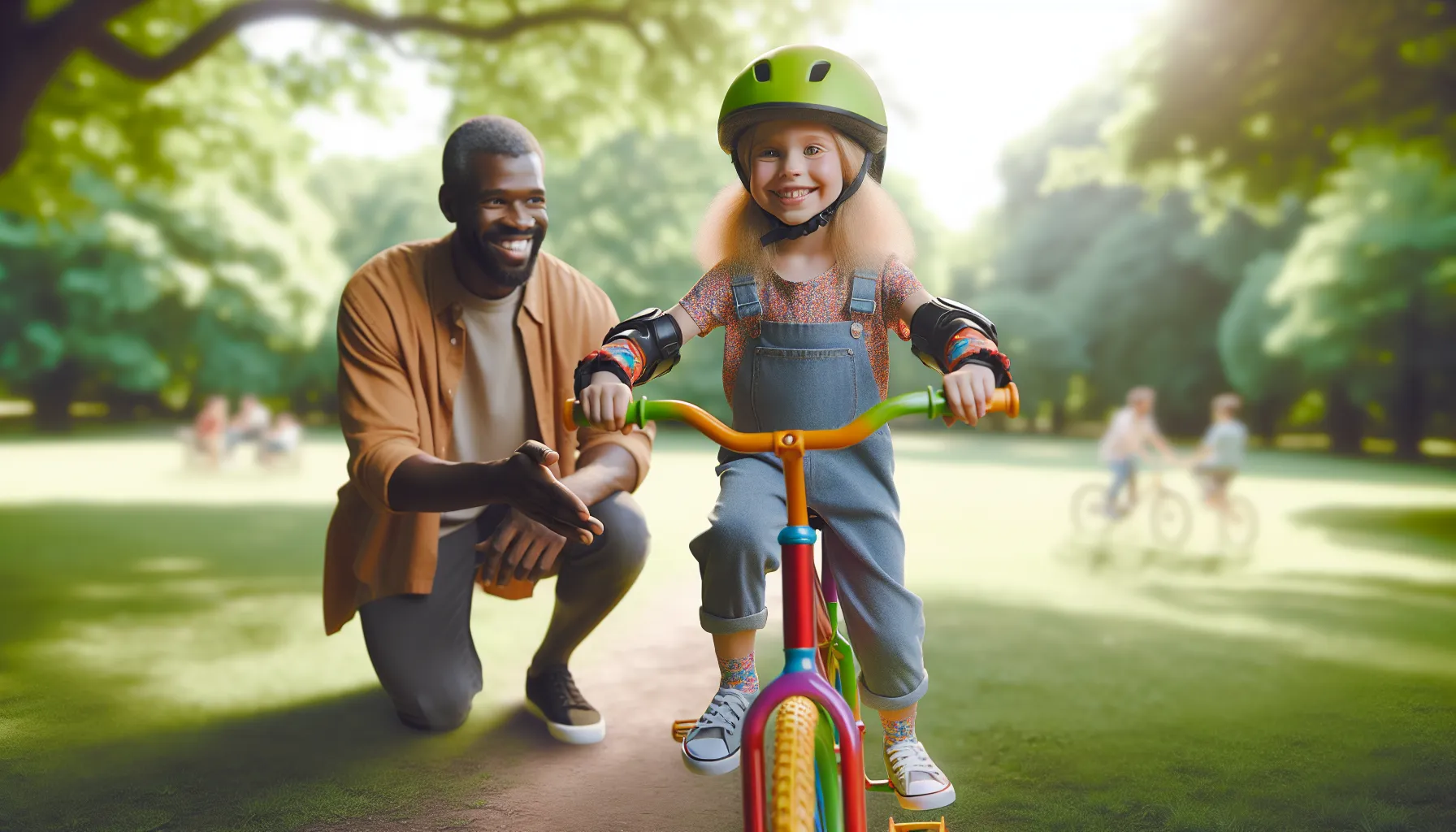
Teaching a child to ride a bike often comes with challenges that can slow progress. Addressing fears and staying patient sets the foundation for success.
Dealing With Fear Of Falling
I address fear by ensuring the child feels safe and supported. Using safety gear like helmets, knee pads, and elbow pads builds their confidence. I choose flat, open areas for practice to minimize risks and explain how small falls are part of learning. If fear persists, I encourage them to use a balance bike or walk the bike gently while holding the handlebars until they’re more comfortable. Staying calm and offering frequent reassurance helps them feel secure.
Maintaining Patience And Encouragement
Maintaining patience makes teaching enjoyable for both of us. I celebrate small victories, like staying balanced for a few seconds or completing a turn, to motivate progress. I avoid showing frustration even if they repeat mistakes and use simple instructions instead of complicated explanations. When they feel stuck, I take short breaks, letting them regroup before trying again. Compassion and encouragement help keep the experience positive and fun.
Tips For A Positive Experience
Teaching a child to ride a bike can be an exciting journey with the right approach. Staying positive and supportive creates a fun, memorable experience for both of you.
Setting Realistic Expectations
I focus on progress rather than perfection when teaching. Kids learn at different paces; some might master balancing quickly, while others may take more time. I remind myself that setbacks, like losing balance or hesitation, are part of the process. Instead of expecting instant results, I value small improvements, like successfully coasting a short distance or keeping their feet on the pedals.
Celebrating Small Victories
I celebrate every milestone, no matter how small, to boost confidence. If they balance without assistance for a few seconds, steer the bike, or stop smoothly, I cheer them on. Compliments like “You’re doing an amazing job!” or high-fives go a long way. I also encourage short breaks with a snack or water to keep their energy up and maintain enthusiasm during practice sessions.
Conclusion
Teaching a child to ride a bike is such a rewarding journey. It’s not just about learning a skill; it’s about building confidence, creating unforgettable memories, and sharing moments of joy. Every wobble, every laugh, and every small victory adds up to something truly special.
Remember, patience and positivity go a long way. Celebrate progress, no matter how small, and keep the experience fun and stress-free. Before you know it, your little one will be pedaling off with a huge smile, ready to explore the world on two wheels. What a beautiful milestone to be part of!
Frequently Asked Questions
Why is teaching a child to ride a bike important?
Teaching a child to ride a bike is a key milestone that builds confidence, independence, and physical coordination. It also promotes healthy habits, fosters a sense of adventure, and teaches valuable life skills like perseverance and discipline.
What are the benefits of learning to ride a bike for children?
Riding a bike helps children develop motor skills, improve physical strength, boost confidence, and enhance independence. It supports mental well-being, encourages social connections, and introduces eco-friendly habits.
How do I choose the right bike for my child?
Select a bike where your child can comfortably touch the ground while seated. Balance bikes or bikes with training wheels are ideal for beginners. Ensure the bike is the correct size and properly maintained.
What safety gear does a child need to ride a bike?
A properly fitted, safety-certified helmet is essential. Additional gear includes elbow pads, knee pads, and gloves to protect during falls. Regularly check the bike for secure bolts, brakes, and tire pressure.
Where is the best place to teach a child to ride a bike?
Flat, open spaces like empty parking lots or parks are ideal. Avoid areas with heavy traffic or obstacles to create a safe environment for learning.
How can I help my child overcome the fear of falling?
Use safety gear to build confidence, choose flat practice areas, and create a supportive environment. Offer encouragement, celebrate progress, and take breaks if frustration arises.
Should I start with a balance bike or training wheels?
Balance bikes are excellent for teaching steering and balance, while training wheels provide extra stability. Start with what makes your child feel most comfortable and gradually introduce pedaling.
How long does it take for a child to learn to ride a bike?
The learning process varies by child. Some may learn in a few days, while others take weeks. Stay patient and focus on steady progress rather than the timeline.
What should I teach first when teaching a child to ride a bike?
Start with balance and steering as foundational skills. Use a balance bike or remove pedals from a regular bike to help your child develop stability and build confidence.
How can I keep my child motivated while learning to ride?
Celebrate small victories, offer encouragement, and keep practice sessions fun. Include breaks with snacks and water to maintain energy and enthusiasm for the process.
What if my child gets frustrated during bike lessons?
If frustration arises, take a break and try again later. Offer words of encouragement, focus on progress, and remind your child that learning takes time and practice.

